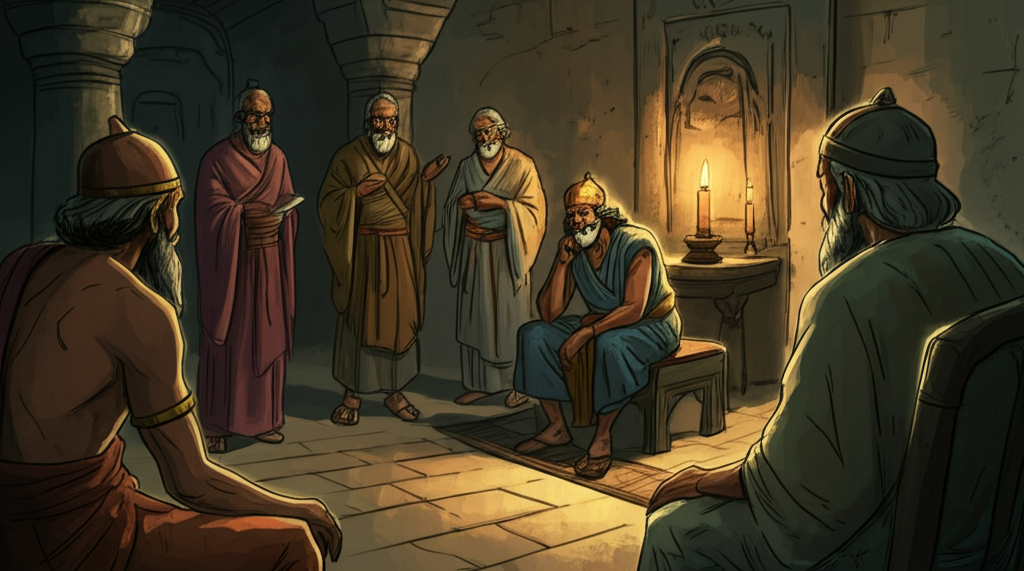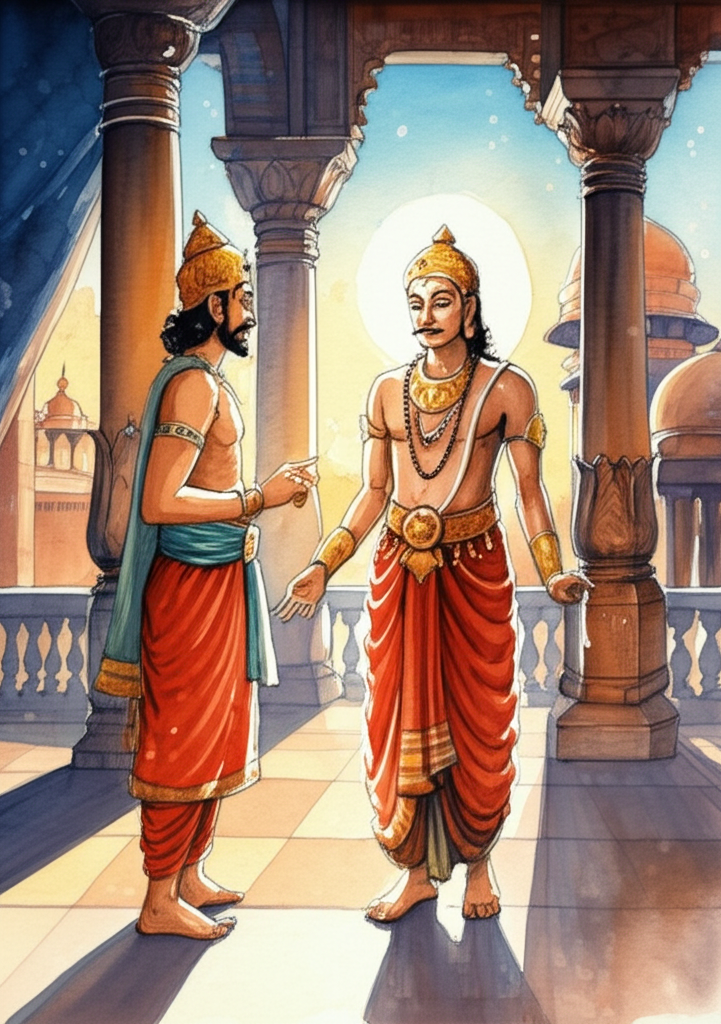
A long, long time ago, there was a smart man who used to be the future Buddha. He was born into a family that helped the king, whose name was Brahma-datta, in the city of Benares. When the smart man grew up, he gave the king advice about everything, like what to do and how to be good.
Now, this king loved to talk! He would talk and talk, and no one else could get a word in. The smart man wanted to help the king stop talking so much, so he was always looking for a way to do it.
At the same time, in a pond high up in the mountains, lived a turtle. Two friendly ducks, called hamsas, would fly down to the pond to eat. They became good friends with the turtle. One day, after they knew each other really well, the ducks said to the turtle:
“Hey turtle! Where we live, near the Golden Cave on Mount Beautiful, is an amazing place! Would you like to come with us?”
“But how can I get there?” asked the turtle.
“We can take you,” said the ducks, “but you have to promise to keep your mouth shut and not say a word to anyone!”
“Oh, I can do that! Take me with you!” said the turtle.
“Great!” said the ducks. They found a stick, and the turtle bit down on the middle of it. Then, the ducks each grabbed an end of the stick with their beaks, and they flew up into the sky!
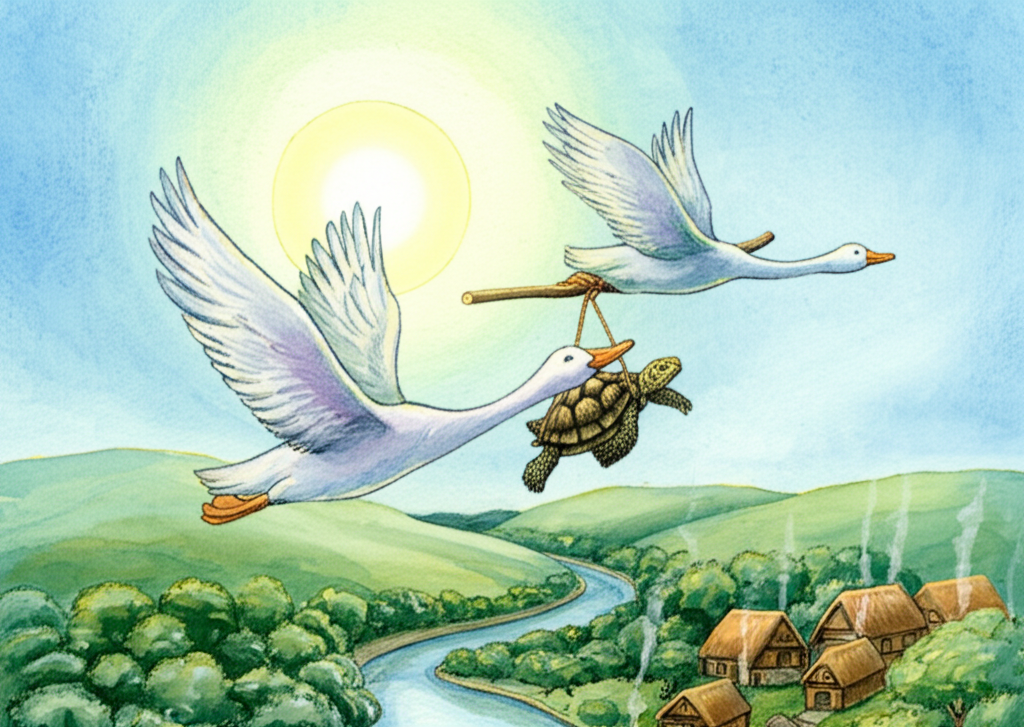
As they flew over a village, some people looked up and shouted, “Look! Two ducks are carrying a turtle on a stick!”
The turtle really, really wanted to shout back, “Well, if my friends want to carry me, what’s it to you, you silly people!” But just as the ducks were flying over the king’s palace in Benares, the turtle let go of the stick to shout. He fell down, down, down into the courtyard and SPLAT! He broke into two pieces!
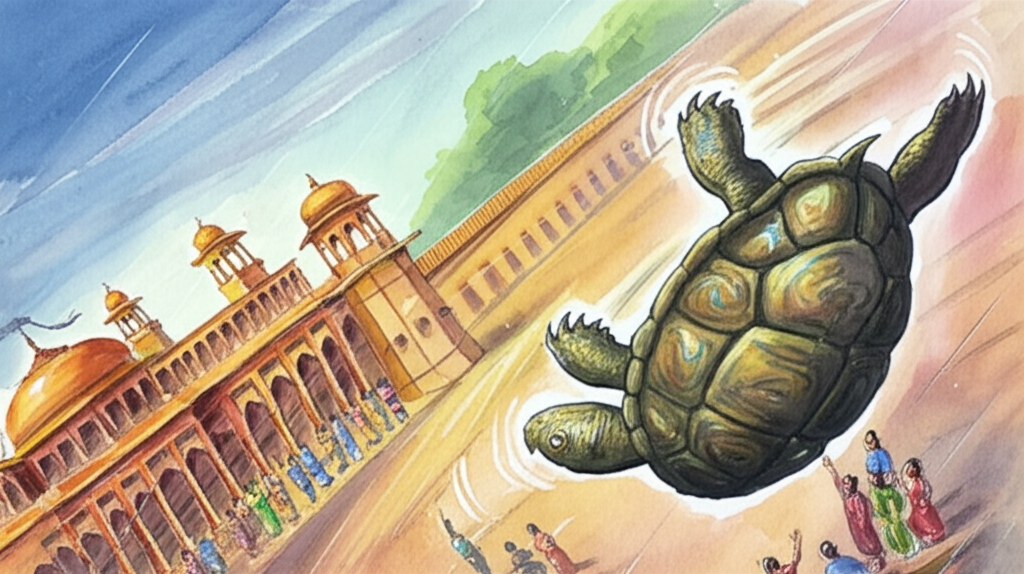
Everyone cried out, “A turtle fell into the courtyard, and it’s broken in two!”
The king, with the smart man beside him, went to see what had happened. All the king’s helpers came too. The king looked at the turtle and asked the smart man, “Teacher! How did this happen?”
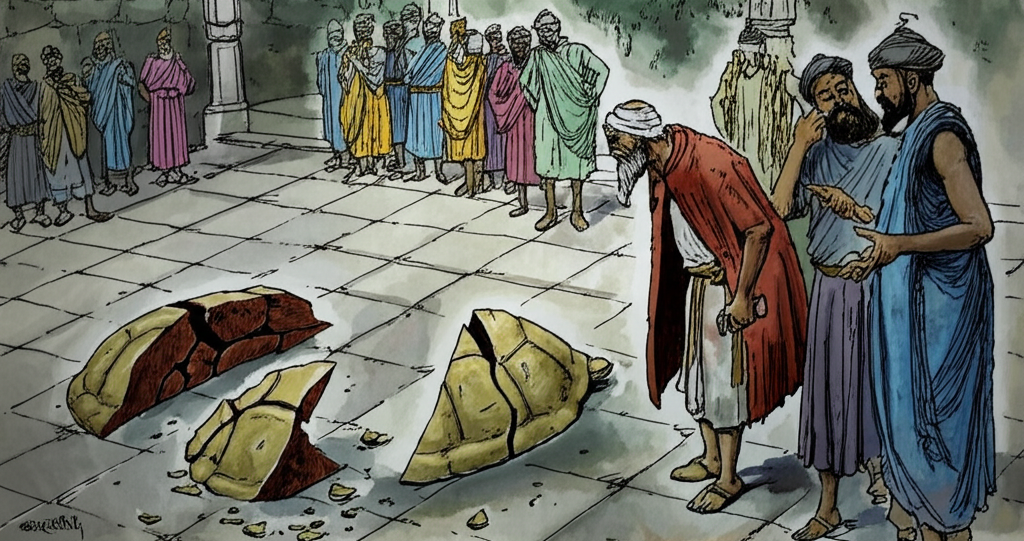
The smart man thought to himself, “I’ve been waiting a long time to help the king talk less. This turtle must have made friends with the ducks, and they tried to take him to the mountains. But because he can’t stop himself from talking, he must have let go of the stick. That’s why he fell and died!”
Then, the smart man said to the king, “Your Majesty, those who talk too much always get into trouble, just like this turtle!”
Then he said these rhyming words:
"The turtle talked and that was bad,
He should have kept his mouth shut, sad!
He held the stick with all his might,
But talking made him lose his flight.
So listen close, O King so grand!
Use wise words, understand?
The turtle talked and fell down hard,
A lesson learned in your courtyard!"
The king knew the smart man was talking about him! He asked, “Teacher, are you talking about me?”
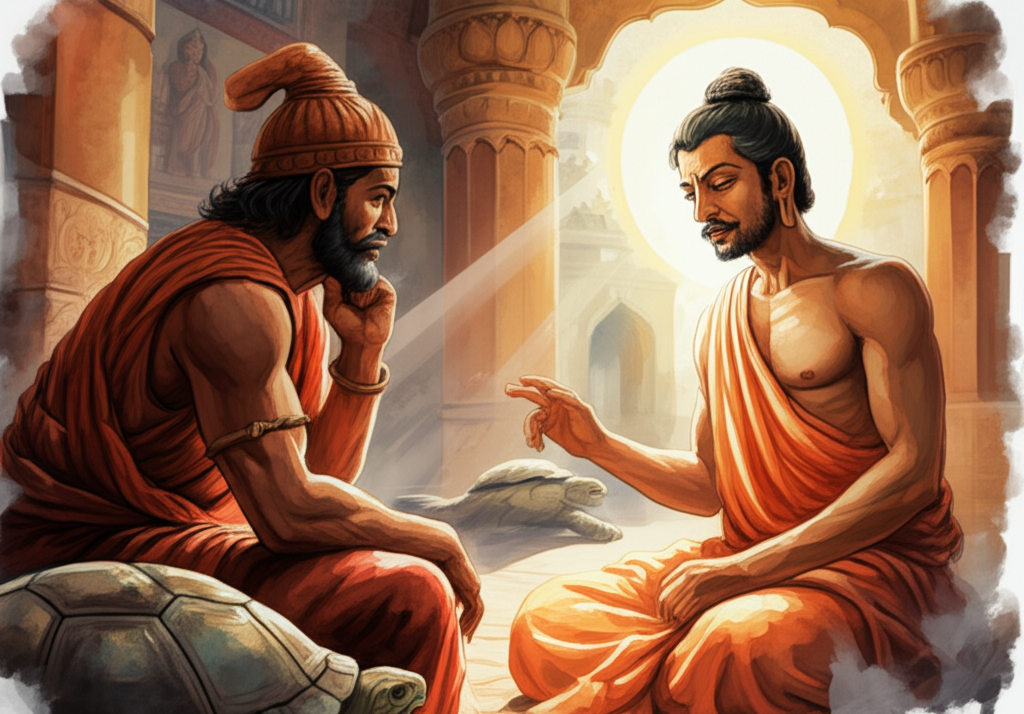
The smart man said, “Great King! It could be you, or anyone else, but whoever talks too much will have bad luck, just like the turtle!”
After that, the king tried hard to talk less, and he became a man of few words. He learned that sometimes, it’s better to listen than to talk!
